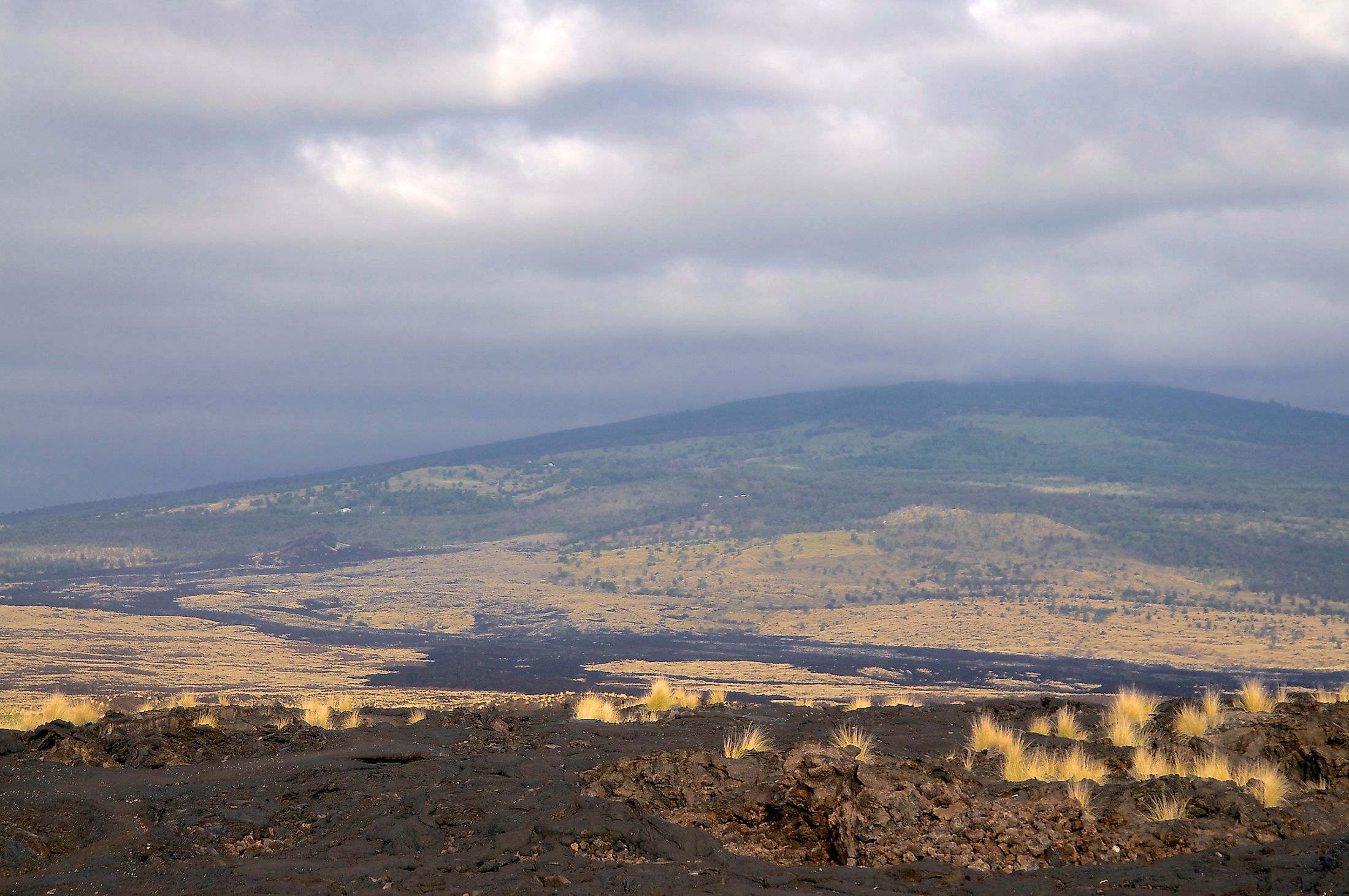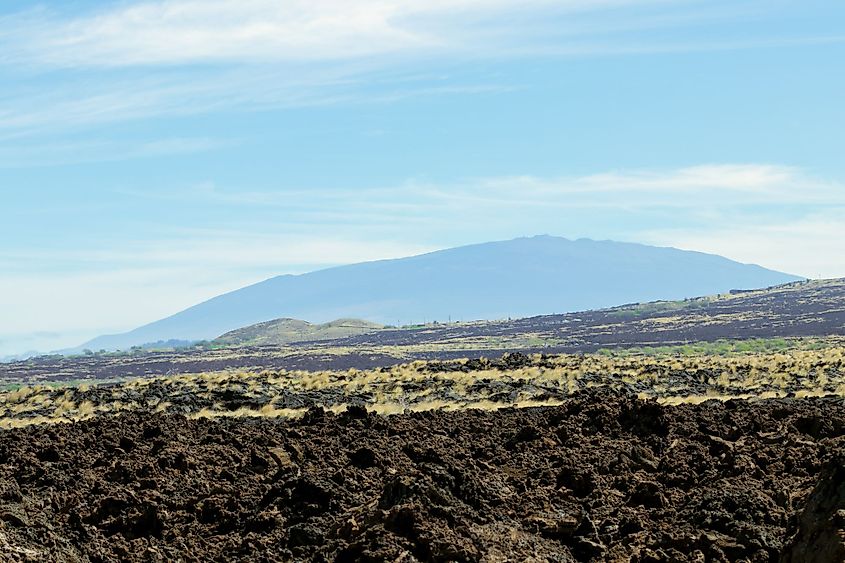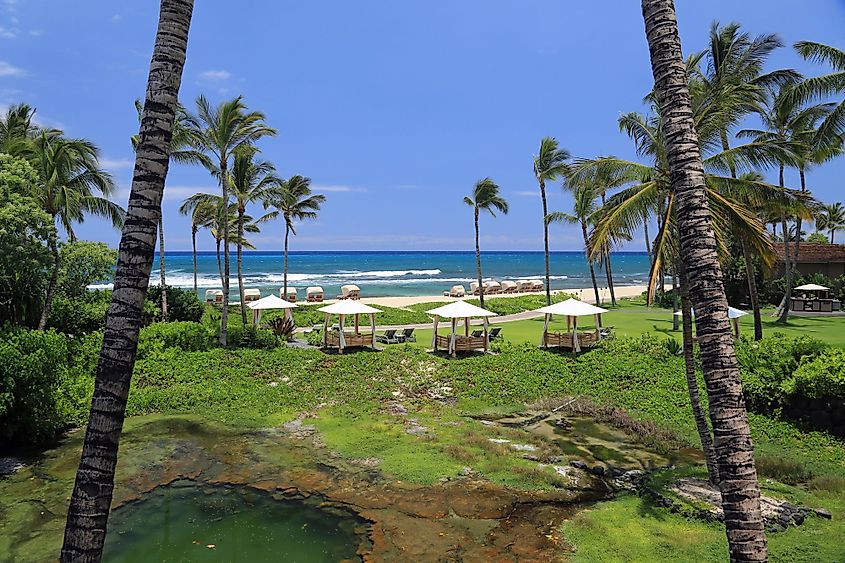
Hualālai
Hualalai is one of the five active shield volcanoes in the Hawaiian Islands that form the Big Island of Hawai'i. This large shield volcano is situated in the northwestern part of the Big Island of Hawai’i in the US State of Hawaii. Hualalai is the fourth highest mountain peak in Hawaii, which rises to an elevation of 2,521m and has a prominence of 936m. It is also the third most active volcano after Kilauea and Mauna Loa on the island of Hawai’i.
Geology Of Hualalai

Geologists believe that about 300,000 years ago, the Hualalai volcano rose above sea level. Hualalai is considered the third-youngest and is the westernmost of the five major volcanoes on the Hawaiian Islands. Occupying a land area of 751 sq. km, Hualalai covers about 7% of the Island of Hawai’i and has a volume of 12,400 cubic kilometers. The dome of Hualalai has a length of 39km and a maximum width of 32km. There are three rift zones in Hualalai and more than a hundred cinder and spatter cones arranged along these rift zones. However, there is no summit caldera in Hualalai; but instead, there is a collapse crater situated about 0.48km across a small lava shield. A significant portion of Hualalai’s southern slope is covered by a 10 to 100cm thick layer of volcanic ash. Geological studies have revealed that during the last 5,000 years, a significant portion of the surface of the Hualalai volcano has been covered by lava flows made up of shield alkalic basalt. About 100,000 years ago, the Hualalai volcano entered its post-shield stage of development. Therefore, the Hualalai volcano is relatively rougher in shape and structure compared to active volcanoes Mauna Loa and Kilauea.
The most significant sub-feature of Hualalai is Pu’u Wa’awa’a, a 372m tall volcanic cone located to the north of the summit with a diameter of more than 1.6km. This volcanic cone has a prominence of 275m, extending over 9km. Studies have revealed that the volcanic cone is made up of trachyte, which is only found in the Hualalai volcano and not on any other volcanoes that form the Island of Hawai’i. The lavas of the Hualalai volcano are also known to be the source of xenoliths, which are rock fragments of the Earth’s mantle, brought upwards on the surface by the lava flows. The lava streams of Hualalai are interspersed on its southern and eastern slopes with those of the adjacent Mauna Loa volcano.
Eruptive History Of Hualalai
As mentioned earlier, Hualalai is the third-most active volcano after Mauna Loa and Kilauea. In the last 1,000 years, it has been recorded that the Hualalai volcano has erupted at least three times. Volcanologists believe that Hualalai has a recurrence interval of about 200 to 300 years based on its volcanic activity. As per records, Hualalai last erupted in 1801 after remaining inactive for more than two thousand years. Scientists, therefore, consider Hualalai to be potentially active as it is again expected to erupt within the next 100 years. Studies have revealed that the 1801 volcanic eruption produced fluid alkalic basalt lava flows with a total output volume of more than 300,000,000 cubic meters. Massive lava flows released from the two vents eventually entered the Pacific Ocean off the western edge of the Big Island of Hawai’i.
Human History

The indigenous Hawaiian people have inhabited the flanks of the Hualalai volcano since ancient times. Hundreds of years ago, the “Ahu A Umi Heiau” shrine was constructed on a dry plateau east of Hualalai. The Kaloko-Honokohau National Historical Park is located on the shores to the west of Hualalai. In 1837, the Mokuaikaua Church was built for missionaries. Since 1927, the Royal Hulihe’e Palace has been maintained as a museum. Close to the town of Holualoa, Kona coffee grows on the western slopes of the Hualalai volcano. The shores on the west of Hualalai are also well suited for vacation resorts, including the Kona Village Resort, the Four Seasons Resort, etc. The Pohakuloa Training Area, located on a high plateau between the Hualalai, Mauna Loa, and Mauna Kea volcanoes, provides a remote training ground for the US Army and US Marine Corps.











